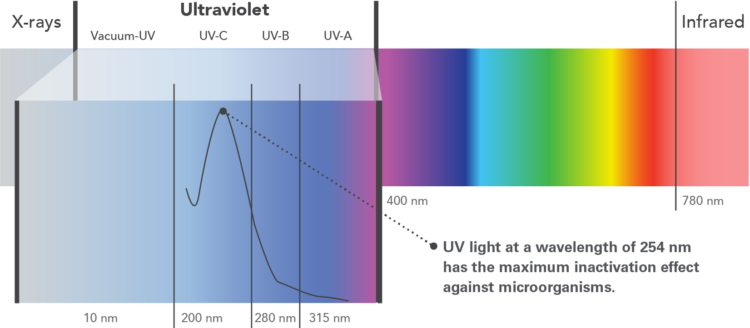Ultraviolet light has a long and well-proven history in water treatment and is rapidly gaining popularity as an effective means of inactivating microbial contaminants, including cryptosporidium, giardia, and E. coli.

At the right wavelength, UV has inactivation properties.
In 1877, the inactivation properties of sunlight were discovered, and it was only a matter of time before people tried to apply this knowledge for practical use. In 1903, Niels Fensen received a Nobel Prize for his use of ultraviolet light to combat tuberculosis (although not in water), and in 1910, the first drinking water treatment system opened in Marseilles, France.
The evolution of UV
- 1930s: The first tubular lamps were developed, allowing for easier applications and different configurations for use.
- 1950s: The first truly significant research into UV treatment began.
- 1960s: UV treatment became more widely used in commercial applications and residential use began.
Today, UV treatment is a widely accepted means of removing various microbial contaminants from water and has been installed in many major public drinking water and wastewater treatment plants worldwide.
>> Next: How Does UV Treatment Work?
